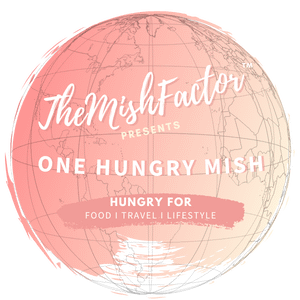Well well well, looks like this kombucha phase may have outlived it’s phase trial period. Okay I won’t beat around the bushes–I’m completely hooked on making different flavors types of fermented tea, and I’m going to take a gander and say if you’re reading this either you are too or you want to be.
If you’re looking for the original, Kombucha Chronicles with 101 how to tips, please check there instead!
Click here to jump down to flavor recommendations!
Tea Talk
So it’s been a several months and even a whole SCOBY restart later, and I have to say as worried as I know I was about vinegar eels and other contaminants, making kombucha (and even “Jun”) has become a peaceful weekly routine. No more pH strips either, as once practiced in brewing you know when to offset the pH with extra vinegar due to overzealous 2F bottling.
As I love comparing things, I do have a green tea kombucha style SCOBY converted to a “Jun” style SCOBY, i.e. eats honey now and is only green tea and a traditional kombucha SCOBY (eats black tea and white sugar), each in gallon jars.
Aside from watching SCOBY adapt to new environments, it’s great to have one of each so I can fundamentally tell you that not only does the tea type make a difference in the finish of flavors (between fermenting the base/flavors and infusing flavor) but it helps say definitively this–what some people consider to be desirable attributes to spotlight like bitterness (read: over-steeped tea) and acidity (read: sometimes fermented to the point of vinegar), are things I’ve experimented away from. Yes kombuchas/juns fundamentally need an acidic environment to thrive, but there is a difference in having that be the main flavor versus a canvas to work off of.
As such I have some flavors I like to make/recommend to keep fermenting fresh and fun for all parties involved. A lot of these are, thankfully, favorites of friends as well. While it’s great to enjoy your own craft, I find these things to stuff worth sharing.
And as a bonus, if you like carbonation, I do recommend adding extra sugar content (beyond what I’ve said in my past post) to encourage carbonation. Yes you may not need a pellicle to make great kombucha, but you do need yeast strands and yeast food (i.e. sugar/honey) for it to convert.
Converting Kombucha SCOBY to Jun SCOBY
I’m certain the purists will be scandalized, but it’s fairly common reddit talk on how to help adapt a black tea, white sugar digesting SCOBY to handle a green tea, honey matrix (which I will call simply Jun here on out even though I’m not 100% sure if that’s accurate as there is a lot of literature arguing for/against Jun being a specific strain of bacteria/yeast combo). Most shy away from this as it seems there is a risk of cultivating a yeast strain that will make your tea off gas a funky smell–however every time you work with fermenting you risk funky variants which is why some folks keep a reserve cup of tea. Or just accept the beauty of learning to ferment is the skill set to start over as needed.
Converting the SCOBY is as easy, albeit gradual process. Much like starting a new hobby, cultivating a new skill, or starting up at yoga/working out after a long hiatus, one does not overload the SCOBY. My sequencing is as follows:
- Use green tea instead of black tea. Ferment away. Save what’s needed to start next batch of kombucha/jun.
- Substitute 20% of the sugar for honey. Repeat.
- Substitute 40% of the sugar for honey. Repeat.
- Substitute 60% of the sugar for honey. Repeat.
- Substitute 80% of the sugar for honey. Repeat.
- Use 100% honey in the next batch. Undergo full fermenting making process.
After this your SCOBY should be fully trained in handling honey. During this process you may notice that the SCOBY converts at a slower pace–that is fine. As the SCOBY adopts more jun converting bacteria, you’ll miss those slow days. Jun SCOBY tends to ferment faster at the same temperature as it’s kombucha counterpart. It is also known to therefore be more sensitive to heat. If you’re not ready for something that can ferment as quickly or live in a warmer area, think about stopping the process midway and use a combination of sugar/honey and/or blend black and green tea together.
Fan Favorite Flavors
Green Tea (Jun) Base
Teas brewed with to date: Jasmine, Second Flush Darjeeling
Infusion tends to take up about 1/5 the bottle, remove component after 48 hours
Non-infusion tends to be 10-20% by weight of bottle (bottles effectively contain 800g finished product)
- Rosemary, mint, sage infusion*
- Lavender infusion (+/- mint)
- Guava preserves (make into a liquid and integrate) ~20%
- Raspberry and lemon juice with mint infusion
- Asian/Shiro plum jam (make into a liquid and integrate) ~15%**
*riff off Dr. Brew’s Clear Mind finish, especially if using Darjeeling or a weak steep of Jasmine
**You may notice the header has shiro plums pureed in…ultimately it was too chunky and resulted in a ‘booch bomb and the yeastiest bottle to date
Black Tea (Kombucha) Base
Teas brewed with to date: Ceylon, English Breakfast
- Strawberry (usually simple syrup) with rosemary infusion
- Ginger (grated or infusion) with (blue/rasp/black)berry
- Raspberry (muddled) ginger (grated or infusion)
- Mocktail Mule–6 juiced limes, 20g grated ginger with mint infusion
- Apple cider (this one literally just throw in 20-25% by volume apple cider to add complexity to flavor, it’s a seasonal favorite)
Hope these flavor favorites of mine will help inspire you to try more flavors. Personally, I love seeing which herbs or unexpected additions will add another layer of flavor to the tea.
Stay Hungry
XOXO
Mish ♥

